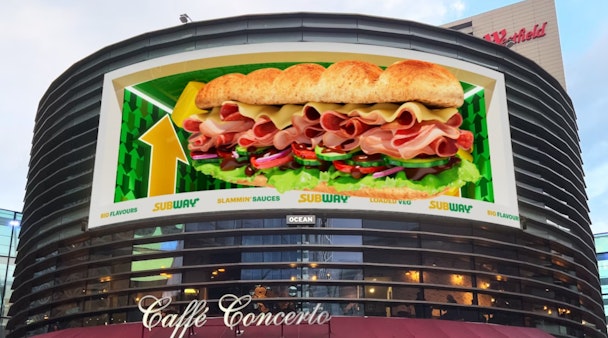Subway’s gone stale, but where did it all go wrong?
Annabel Engels, client services director at Mother Design, reflects on where it all went wrong for Subway and what it could learn from its competitor and soon-to-be sister brand, Dunkin’.

Once the largest fast-food chain in the world by number of locations, Subway announced last week that it’ll be selling itself to Roark Capital Group, ending six decades of family ownership. The sale will make Roark Capital one of the largest restaurant operators in the world, with chains like Dunkin’, Baskin-Robbins and Arby’s already under its belt.
In the fast world of fast food, staying still means losing out - a lesson Subway seems to have learned the hard way. While the rest of the industry has been undergoing rapid transformation, either by evolving their customer experience like McDonald’s’ digital order screens or tapping into adjoining sectors, Subway has seemed somewhat complacent. Sure, it was one of the first brands to tap into the sensory, luring people in-store with its distinctive smell. But go into a Subway store today, and your experience is identical to the experience you would have had ten years ago. Same layout, same menu, same proposition.
Advertisement
With that said, is it really surprising that the chain is rapidly losing popularity?
The consumers of today are very different from consumers ten years ago. They’re no longer willing to sacrifice quality for convenience – they want it all. They’re savvy. They care about what they put into their bodies and expect food brands to support this by providing transparency. Subway’s been through so much scandal over its ingredients – from its ‘yoga mat bread’ to its ‘bread’ being deemed ‘cake’ in Ireland for high sugar levels. To continue positioning itself as a healthy option when its integrity has been so publicly undermined seems bizarre, resulting in a lack of trust.
Take a look at Dunkin’, on the other hand, and we see a masterful example of how to navigate the shifting tides of consumer preferences. Once synonymous with donuts, it quickly spotted that consumers were spending most of their money in the coffee sector. A well-documented rebrand in 2019 saw the business pivot almost entirely into the beverage space. It dropped the ‘Donuts’ from its name and introduced new menu items that appealed to current consumer demand, like its cold nitro brew.
Advertisement
Dunkin’ also overhauled its in-store experience, showing that this rebrand went far beyond aesthetics. Customers could soon pre-order through its app, allowing them to pick up from stores, drive thru’s or on the curbside without the need to queue.
So, it wasn’t just about a name change.
It was about building on a legacy to provide consumers with more of what they want. Through the retention of an iconic pink and orange color scheme and the emblematic font introduced back in 1973, Dunkin’ still feels familiar. But its brand, stores and customer experience are continually innovating, and through that, it was able to tap into a new generation.
Dunkin’ has proven that staying ahead requires more than just a reactive stance – it demands a proactive, customer-centric approach. Brands either need to provide better products or better experiences. Ideally, they’re providing both. Ultimately, it underscores the importance of a strong insights team that really understands both its consumer and cultural trends and is translating this intelligence into opportunities that stretch the brand without losing the consumer.
So where does this leave Subway?
Suggested newsletters for you
If history teaches us anything, we’re going to see positive (and much-needed) change for the fast-food giant in the months and years to come. Whether it’s bringing in a new array of products that speak better to modern tastes or a new attempt at elevating the customer experience, Subway needs to devise a way to bring its legacy into the present. This may be a painful development for the brand in the short term, but it’s a savior for one heading towards extinction.
The lesson here for Subway’s competitors? Let this be a helpful warning. Don’t wait for a better brand to rescue you. Change, evolve, innovate – and allow customers to join your brand journey.

